Rottweiler weight and height: the main parameters of the breed
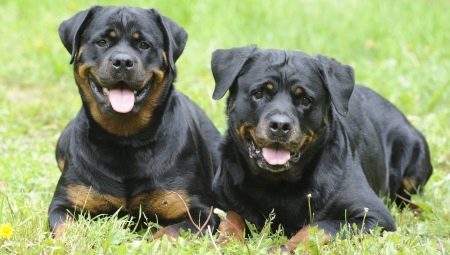
The Rottweiler breed stands out for its massive build and powerful jaws. For their large size, great strength and endurance, these dogs are often called "athletes" among others.
People far from the world of dog breeders consider these pets to be fighting ones, but this is a mistake. By itself, this species is good-natured and a little lazy, but this does not negate the need for early training and socialization. Today we will consider what height and weight are acceptable for this breed.

Peculiarities
In order for a pet to grow up beautiful and correctly folded, it is necessary to control its weight and growth from birth. In the early stages of its life (with proper nutrition), the pet will surprise you with the pace of its development. By 6 months, weight will increase 10 times, and height - at least 3 times. This is normal for the breed described.
To thoroughly track the pace of development of the puppy, very responsible dog breeders keep a table of height and weight by month.It is necessary in order to know exactly when the pet began to gain less weight, and, if necessary, it was possible to show all the entered parameters to a specialist in order to make the right decision.
By age, it is necessary to regulate the nutrition of your four-legged friend.
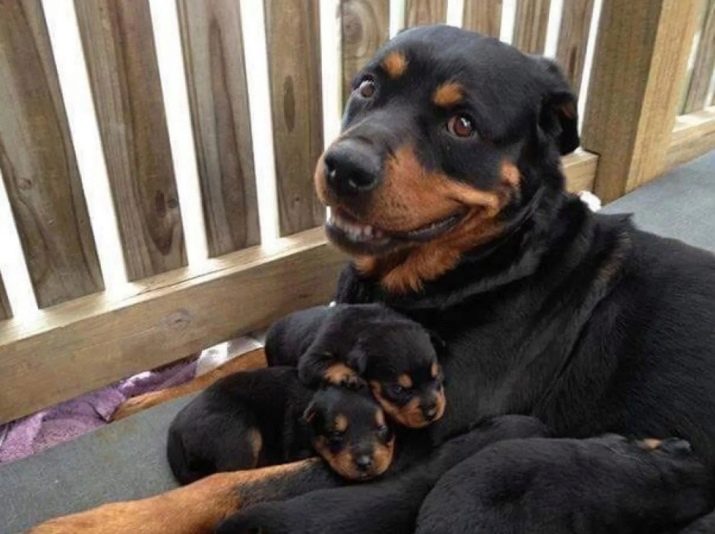
Growth and development of the puppy by months
1 month
In order not to harm an immature baby, it is necessary to competently approach the choice of food and diet. At this age, breast milk will be sufficient, provided that the bitch consumes the required amount of vitamins and minerals. At this point, the height of the puppy at the withers will be 20-22 cm, and the weight will be from 3.5 to 4.5 kg.
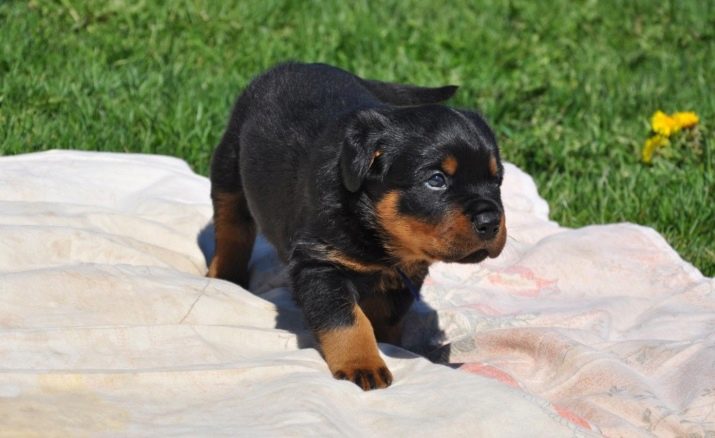
2 months
At 2 months old, the puppy should try raw meat for the first time, which must be cut into small pieces (it will be very difficult for him to gnaw a large piece). At this time, it is time to include fermented milk products in the diet, as well as eggs, vegetables and cereals.
The kid should eat 6 times a day. The pet should receive per day:
- at least 200 grams of meat;
- 400 milliliters of milk;
- 100 grams of porridge;
- 150 grams of cottage cheese and the same amount of vegetables.
At this moment, the height must be at least 29–33 cm, the puppy weighs 8–9 kg.
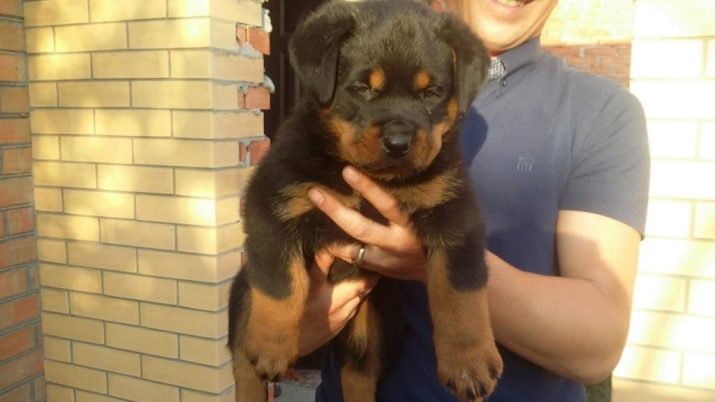
3 months
At the age of 3 months, it is time for the pet to switch to 5 meals a day, increasing the total amount of food. The meat should not be less than 500 grams per day. Milk up to 500 grams, and cottage cheese, cereals and vegetables - up to 200 grams per day. At this time, the puppy should weigh 14-17 kg, and its height should be 47-48 cm.

4 months
At 4 months, there will be no important changes in the diet. Continue feeding as before. The puppy's height at this time will be 50–51 cm, and the weight - 17–23 kg.
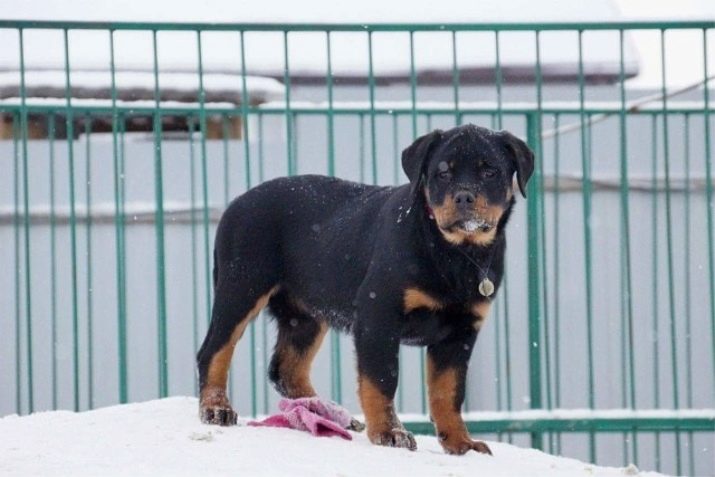
5 months
At 5 months, it's time to cut the number of meals up to 4 times. Increase the portion of meat to 500 grams per day, and cereals - at least 250 grams. Weight at this age should be 24-31 kg, and height - 56 cm.
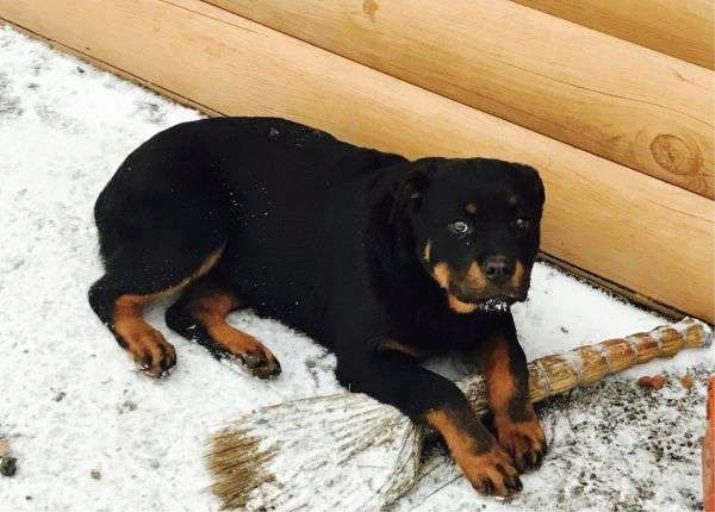
6 months
At 6 months, you need to transfer the animal to a three-time food system with an increase in the daily norm of cereals to 300 grams. Weight at this moment should be 30-35 kg, height - 61-64 cm.
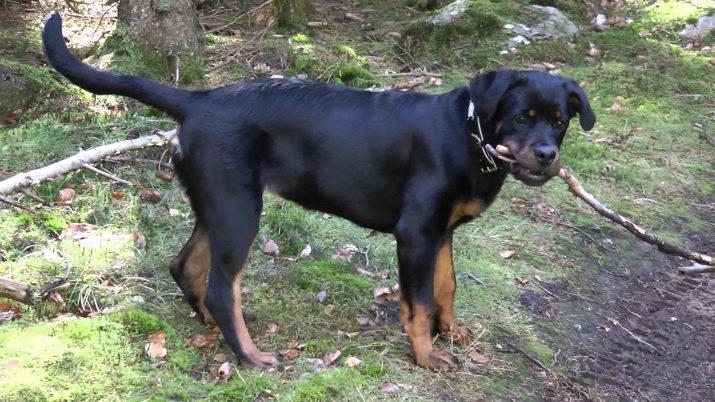
7 months
At this age, it is allowed to introduce additional feed into the diet. This should be done gradually in small portions. You can adjust the number of meals for your pet on your own, it is important to do this at regular intervals. His height should be 61–64 cm, weight - 34–40 kg.
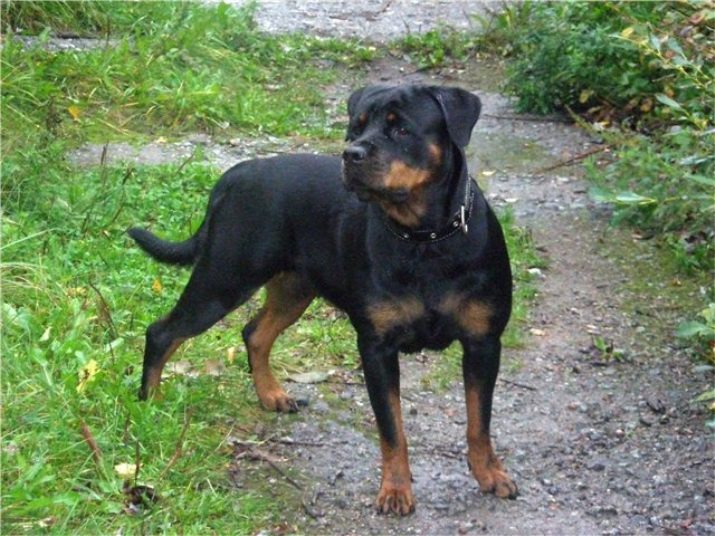
8 months
It is important to monitor your puppy's posture. To prevent it from hunching, the bowl of food must be placed at chest level. The most convenient way for this will be a special high bracket. Remember that the Rottweiler is prone to overeating, therefore it is necessary to accurately adjust its portion. If it is small, the growth of the puppy may slow down, and in case of overeating, health problems may begin.
At this age, the dimensions should be: weight - 36–46 kg, height - 62–66 cm.
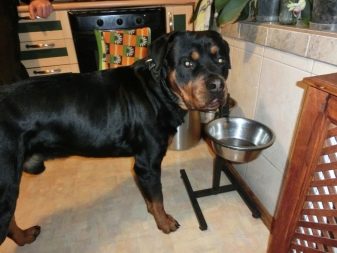
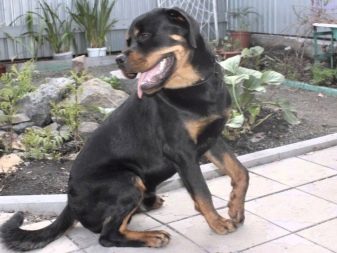
9 months
At this point, you have an almost adult dog in front of you, but with proper nutrition, growth will continue in the future. It is time to reduce the number of meals during the described period to 2 times a day.
Parameters of a 9-month-old Rottweiler: weight - 36-50 kg, height - 63-67 cm.
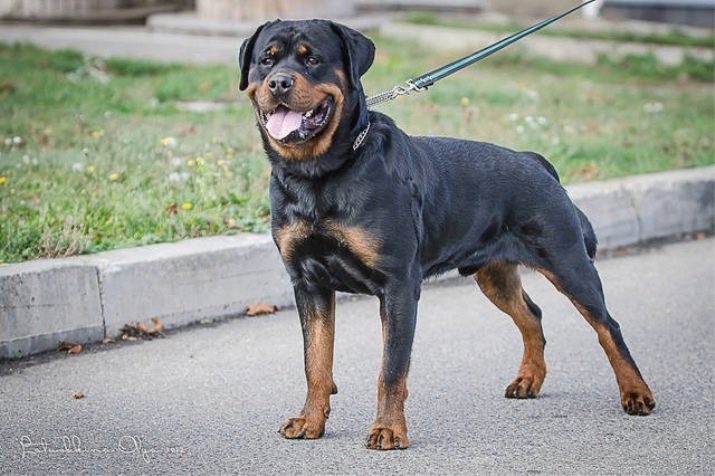
10 months
It is better to give meat raw, but in order to avoid parasite infestation, some owners freeze it or pour it over with boiling water before feeding. It is important to remember that lamb and pork should not be given to dogs due to the increased fat content of this meat, which negatively affects the state of the animal's liver.
At the age of 10 months, the parameters of the animal should be: weight - 36-50 kg, height - 63-67 cm.
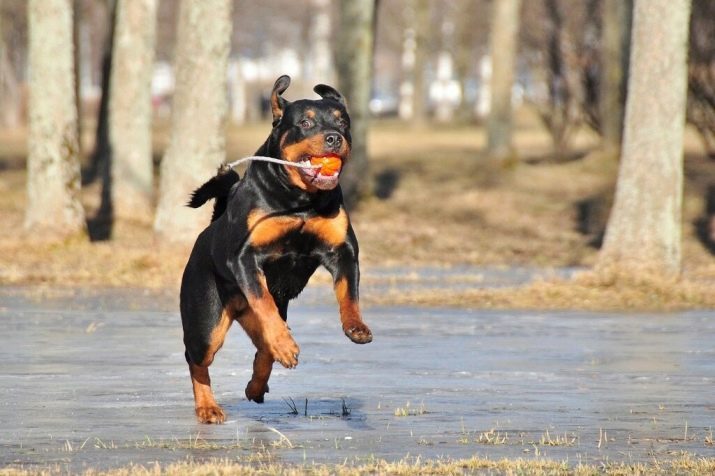
The points listed are indications that are close to ideal for this breed, but if your puppy falls slightly short of them, this is not critical. There is nothing special about the fact that animals from the same litter grow at different rates. Please note that height and weight are not the most important indicators of proper development, better to pay more attention the general condition of the pet, monitor how active and healthy he is.
It is important to know that the owners of the described breed grow in height up to about a year, and then up to 2 years or a little more they only increase muscle mass and weight. In bitches, growth slows down or stops altogether with the arrival of the first heat. After that, the animal can grow up quite a bit (just a couple of centimeters), and then it will only grow in breadth and build muscle.
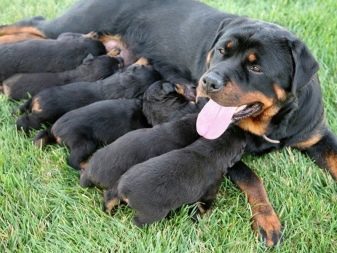

What can affect your pet's weight and height?
There is no definite answer to this question. The parameters of an adult dog are made up of several factors:
- genetics;
- the conditions in which the puppy grew up;
- quality of food;
- the duration of walks and runs;
- exercise during training.
Let's talk in more detail about each item.
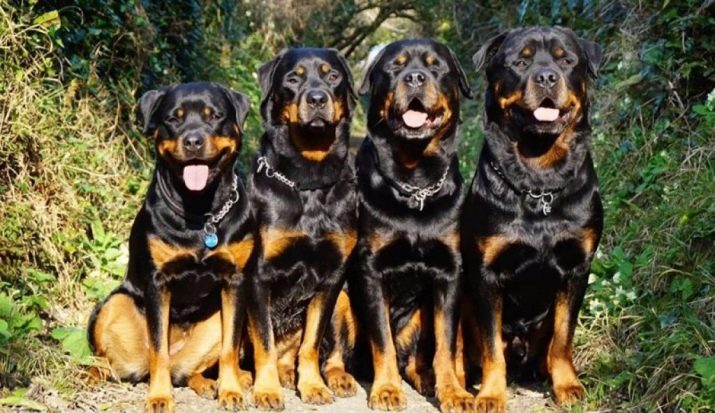
Genetics
Often it is she who causes the puppy to lose weight or breast volume. This may be due to the fact that dogs of a certain line grow more slowly than their relatives.
Another option is parents who are not very tall and muscular. But sometimes there are exceptions to the latter, when, buying a puppy from small producers (say, for keeping in an apartment), newly-made dog breeders discovered that a year later “a bear cub has grown from a hamster”. You won't be able to guess which puppy you will get.

The conditions in which the puppy grew up
It is not even the maintenance of the puppies after birth that plays an important role, but the care of the breeder for the pregnant bitch. Saving on the maintenance of producers, you will not be able to get a good litter. If the mother did not receive the necessary vitamins during pregnancy, then the initial weight of the puppies will be small and they will develop more slowly.
When, after birth, the breeder continues to save money, only on puppies, this attitude will not lead to good results. The lucky ones will be those kids who will quickly find good hosts and, perhaps, with their help, they will catch up.
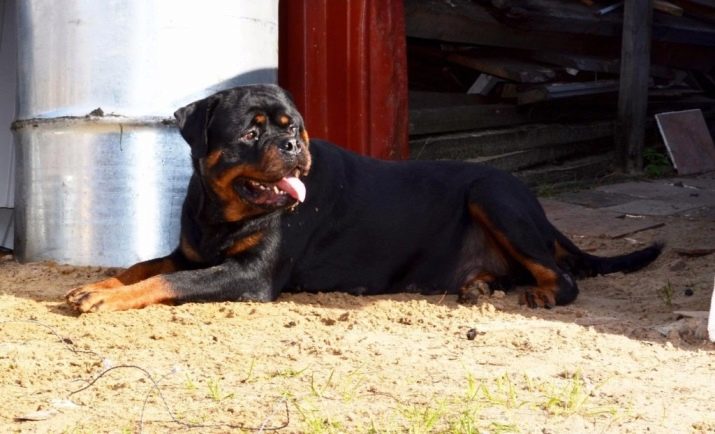
Food quality
In order for your pet to be healthy and vigorous, from the first days in the new house, you must feed him full and high-quality food. Some breeders prefer ready-made food, others choose only natural food. There is no consensus on this matter. Choosing the right food is necessary so that both options contain the elements the dog needs.
Dry food must be of premium grade or higher... When feeding dry food, the pet should always have a full bowl of water. If the dog eats homemade food, then it should not be empty cereal on the water, but a well-nourished porridge on a protein basis. Meat is good for this, no more than once a week you need to cook on a fish basis (the fish should be exclusively seafood, not river).
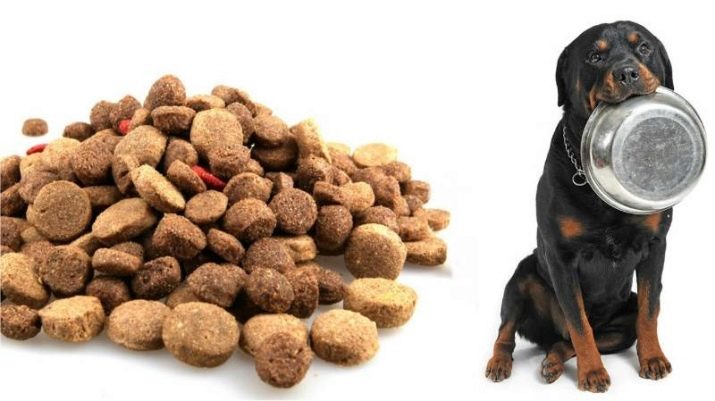
Walking and training
The dog must move and run a lot. It's good if it's rough terrain. During such a run, the animal trains all muscle groups. The more the little puppy moves, the more he will grow and look more spectacular.
Serious diseases transferred to animals at a young age can also slow down its growth and development.
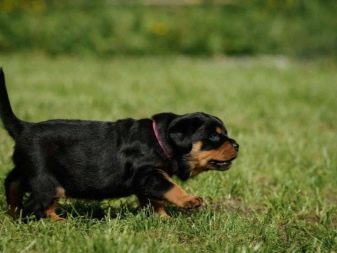
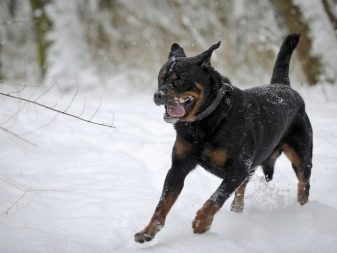
What if the puppy is falling behind the norm?
First you need to find out the reason why the pet is not gaining weight or height at the withers. Except when the problem is in genetics, there is hardly anything you can do about it. Just be patient. The dog will most likely catch up with its peers, but this will happen a little later.
If the reason for the growth retardation turns out to be improper rearing or illness, then you need to save the puppy from the consequences of the period when he received something short of it as soon as possible. Do not try to accelerate growth using top dressing or special growth accelerators.
A more competent decision would be to consult with a specialist for the selection of drugs that are necessary for your pet.
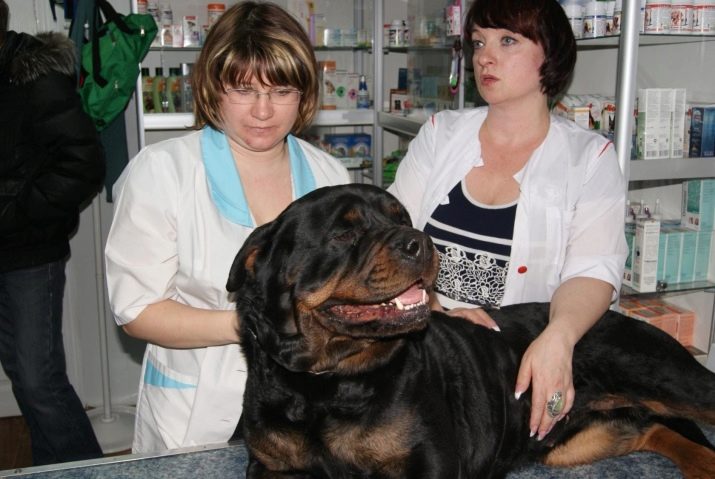
If the matter is in the wrongly chosen feeding, then it is better to increase the amount of protein foods with a calcium content, for example, cottage cheese.
The average weight of a Rottweiler is 42-50 kg, the maximum weight is 60 kg. It directly depends on nutrition and diet. The numbers may vary depending on the nature of the violation. Weight loss is often the result of prolonged exposure to heat. After that, the four-legged eats less. The pedigree of the dog plays a significant role. Ideally, the growth parameters of an adult dog are equal to half the body length. In full height, the dog can reach 68 cm.
The average lifespan of a Rottweiler is 10-12 years... Under good conditions, it can increase up to 14 years. Long-livers are also known - dogs that have lived for 17 years.
How to choose the right food for your Rottweiler puppy, see below.


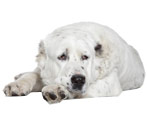














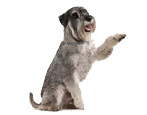


















A Rottweiler puppy at 6.5 months suffered severe food poisoning, possibly with subsequent gastroenteritis (tests were not taken, we do not have veterinary clinics). Now he is 10.5 months old, he is very far behind in size (weight, volume) from his peers. Is it possible to somehow help gain weight and size, or is there nothing you can do about it? The puppy is active, eats well.
Nadya, so that the dog gains weight, go to a one-time evening feeding (!). Give as much as the dog wants to eat. After feeding, remove the bowl and during the day - no pieces. Remember how predators eat in nature: they get food from time to time, and after eating, they digest food for a long time. The intestines of a predator are generally incapable of a constant supply of food. Therefore, the dog should approach the food when he is really hungry. Only then will the dog eat normally and put it aside. And if the dog constantly has food, and he can refresh himself at any time, then the feeling of hunger dulls, and the dog does not need to fatten up.